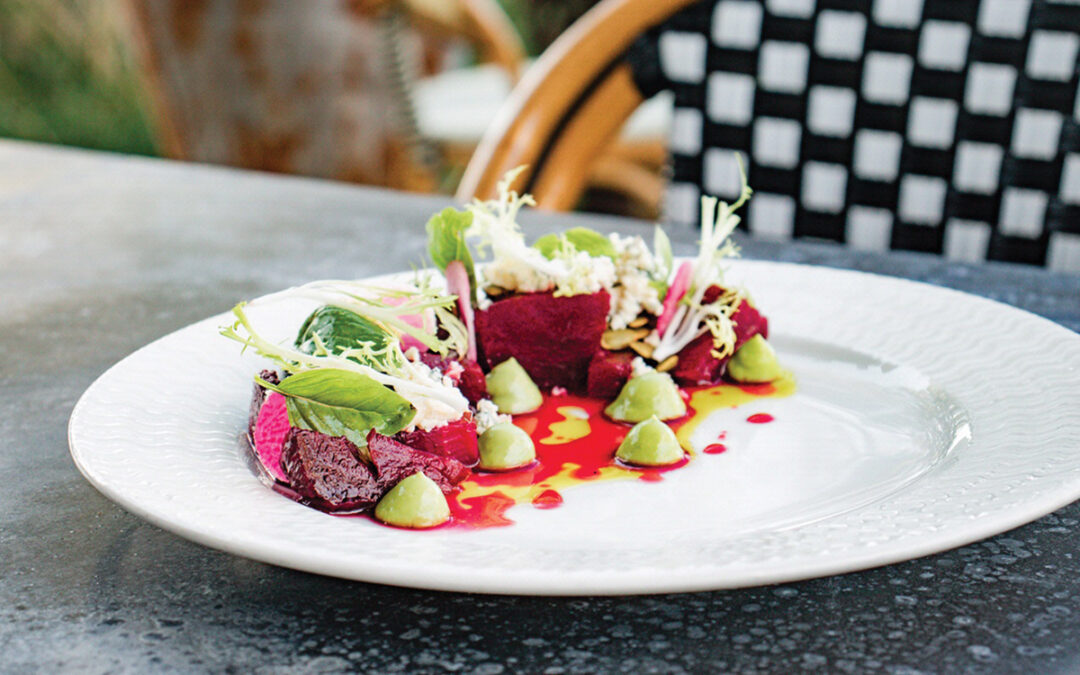Marise McDermott remembers bringing her children to the Witte back in 1986, when her son James was 4 and daughter Julia was still in a stroller.
“There was a fabulous dinosaur exhibit we all loved” says McDermott, who is today the Witte’s president and CEO. “A little later there was another one on animal senses, and they loved that one, too. They became so engaged in this place. My kids could learn about the Texas cultural makeup, about the natural environment, animals … Where else could they learn all of that?”
Where indeed? Thousands of San Antonio youngsters have had similar experiences. With its eclectic collections and special exhibitions ranging from natural history to art, science and history, the little-museum-that-could has entertained and educated generations of kids — and their parents — since 1926. But in recent years, the museum had started showing signs of aging and was badly hurting for more space. Its educational programs could not meet the demand because of cramped quarters, and limited parking wasn’t helping either. More important, the venerable institution had accumulated a debt.
It was time to wake up and smell the coffee. In 2002, McDermott was hired by then-president James McNutt to help with the awakening. She had worked at the Witte before, from 1989-96, and was happy to return following a six-year-stint with the Cedar Rapids History Center in Iowa. Armed with fresh experiences in running a nonprofit, she was ready to tackle the challenge.
“I was hired to help develop a strategic plan for the future” explains McDermott as we settle down in her office to talk. “The first thing I did was to organize a series of focus groups to ask people –- members, teachers, students, citizens — what was important to them. It was so easy. Repeatedly, people said they wanted to know more about the river, the aquifer and water in general. We want to know about our communities, they (also) said. We want to know about the latest in science so our children can learn here. So, now everything we do is under those three umbrellas.”
In 2003, the board voted on a major strategic expansion plan that revolved around the “three umbrellas”: water resources, South Texas heritage and science. And things started changing. When McDermott assumed her present position in April 2004, both she and the board were ready to charge ahead.
“She is a true leader” says board chairman Ty Griesenbeck. “When she took over, it was a tough year. She kept the staff together and won the trust of the board. And she keeps us all focused on the plan that we have been implementing in a very strategic manner.”
Next to McDermott’s office is a conference room where drawings of the future Witte complex are displayed. When the new master plan is fully realized, the familiar area around the old museum and Pioneer Hall on Broadway will look very different.
The plan calls for a glass atrium entrance between the two existing buildings and a campus that stretches all the way to the boardwalk property on the north. A garage and two new centers, the Water Resource Center and the Texas Heritage Center, are planned, in addition to a Texas pioneer village featuring authentic historic houses. What’s more, a buried acequia will be unearthed, refilled with river water and eventually redirected to flow in front of the museum. When all is said and done, the Witte will finally have enough space to accommodate some 500,000 visitors a year.
But before a single shovel could hit the ground in 2007, McDermott and her crew had to get out of debt and raise some funds. The debt was wiped out by the end of 2004 through a combination of an austerity budget and the sale of a downtown building the Witte owned. Then both she and the board spread themselves all over to tell their story and “raise money like maniacs.”
“Fund raising is about asking” she says. “If you don’t ask, you are not going to get it. But it hasn’t been a hard sell. People love the Witte. By the time we opened the World of Water, we had regained momentum.”
She is referring to the popular 2005 show that told the story of water in South Texas, complete with a virtual exploration of the Edwards Aquifer. A prototype of what is to come in the Water Resource Center, it opened June 18, 2005, and ran through the end of the year. “Everybody loved it” says McDermott, “and we raised a lot of money.”
After several years of losses, the venerable institution was finally able to present a positive annual report at the end of 2005.
Another prototype exhibition, A Wild and Vivid Land: Stories of South Texas, should already be in place by the time you read this. It’s designed to offer a glimpse of the future Texas Heritage Center.
From journalist to museum boss
We continue our conversation while taking a tour of the premises. McDermott is eager to show us the preparations for Wild and Vivid Land and all the other repairs/improvements already in place. It’s a Tuesday afternoon and the museum is abuzz with kids of all ages. Dressed simply in a black pantsuit, the president moves about without being noticed. Friendly and unpretentious, she hands a boy a towel he dropped and, like any caring property owner, bends down repeatedly to pick up debris. As we look at the new river-related attractions, she emphasizes how much she wants to make the river visible and real to the Witte’s visitors. “People ask, ‘Is this the same river as on the River Walk?'” she says, shaking her head.
We briefly stop to watch kids ride one of the new “artifacts” the H-E-Buddy SkyCycle, which allows riders to safely bicycle 14 feet up in the air. You have the impression of flying just above the water, explains McDermott, who’s tried it herself.
A New York native, McDermott came to Texas as a young adult and fell in love with this “wild and vivid land.” Armed with a degree in philosophy from Queens College of the City University of New York, she took a job with the San Angelo newspaper and enjoyed writing “Yankee-Goes-West” types of pieces.
“I was entranced with Texas” she confesses. Perhaps the entrancement had a little something to do with the fact that it was also in San Angelo that she met fellow journalist and her future husband, Hollis Grizzard. The couple later moved to Austin and eventually to San Antonio, where McDermott joined the San Antonio Light as the arts and entertainment editor.
McDermott feels that her journalistic interests were largely similar to her present ones. While in Austin, she edited the Texas Humanist, a journal that covered a range of cultural and historical subjects, including water issues. Later in San Antonio, she remembers covering in depth the ancient Texans’ rock art at the Witte. It was something unique, and she thought it exciting that San Antonio had such treasures.
So it was an easy hop from journalism to museum work, she says.
” I love to provide public access to specialized knowledge in a way way that’s understandable to people” explains the president. “Journalists do the same thing, really. It’s a privilege to be able to do that. And it’s a lifelong learning for me, too.”
That desire to learn was instilled early on by her educator parents, who “believed that doing was more important than having.” The family visited museums “all the time” attended plays, and sent the children off to Europe to broaden their cultural horizons. Besides her parents, both of whom now live in Texas, McDermott cites former Witte president Mark Lane as a role model.
Shortly after Lane retired and the new boss seemed less interested in the humanities, McDermott left for Iowa, where Grizzard had landed a job. While there, she volunteered at the fledgling Cedar Rapids History Center only to find herself invited to become a curator and subsequently its executive director.
“It was literally building from the ground up” she says of her experience with the Center. “I learned so much about running a museum and gained more confidence.”
Among other things, she learned that an institution needs a focus, and that that focus cannot be too broad. Remember the “three umbrellas.” She also learned to build a consensus among key community players who are likely to help her realize the institution’s goals.
Though she is presently one of very few female heads of a major museum in the country, at the Witte she is not the first one. In fact, the museum was founded and led by a woman, Ellen Quillin, for 34 years. More recently, another woman, Linda Johnson, served in that capacity, and competent women have been in key positions at the Witte for years. McDermott admits, however, that when she took the reins, she increased diversity by hiring as many men as she could.
Her forte as an executive is her ability to work well with people whether they are men or women, says longtime board member Amanda Ochse, who has accompanied the president on fund-raising missions. “Marise has a delightful personality and relates well to people. She is so enthusiastic and knows the museum so thoroughly that she inspires people” says Ochse.
Among the inspired are two city councilmen, the present mayor and both corporate and individual donors, as well as various agencies and professional institutions that have lent their expertise and resources for specific exhibitions. Needless to say, McDermott will need a great deal of that enthusiasm to raise the $30 million needed for the new campus.
Some major gifts have already been announced, even though the master plan has yet to be formally approved by the city. Former governor Dolph Briscoe gave $500,000 for Wild and Vivid Land, for instance, while philanthropist Betty Kelso earmarked her $1 million gift for the construction of the Texas Heritage Center. In addition, H-E-B and other companies have already renovated and greatly enhanced the popular Science Treehouse. The City of San Antonio also helped substantially by agreeing to finance infrastructure improvements.
McDermott is confident that others will join, too. “If you provide something that the community really wants, it will happen” she says.
Author: Jasmina Wellinghoff
Photographer: Janet Rogers









0 Comments